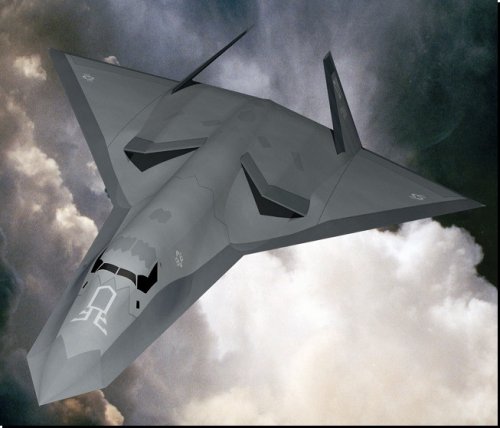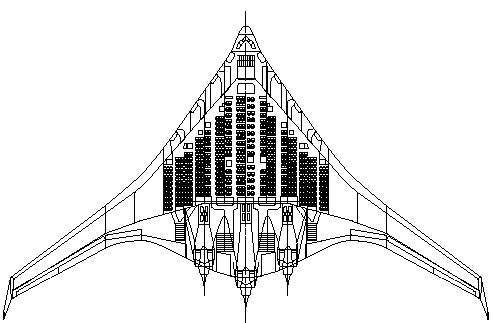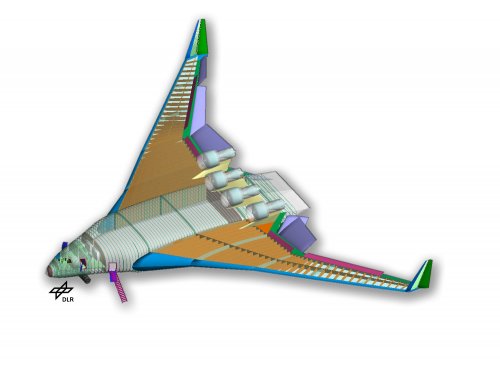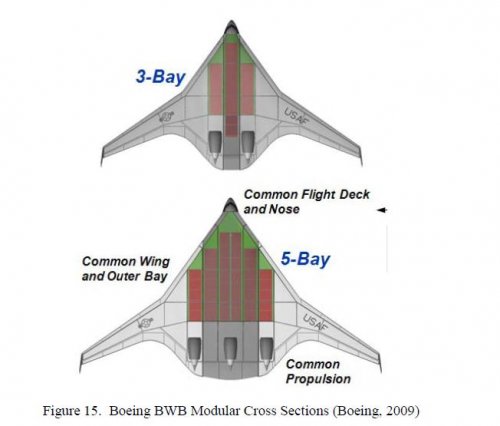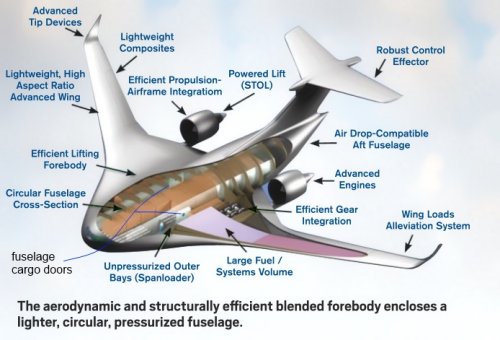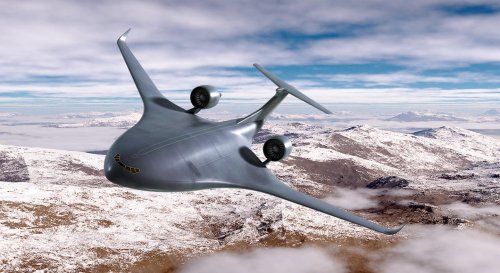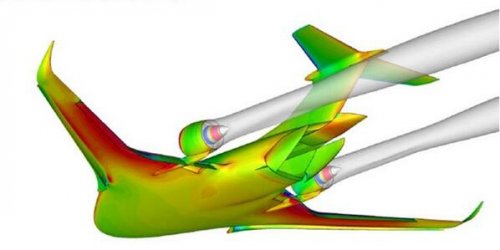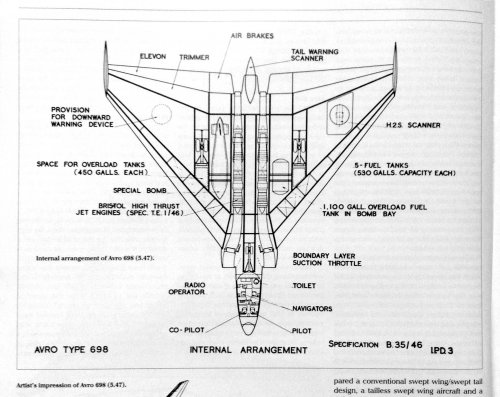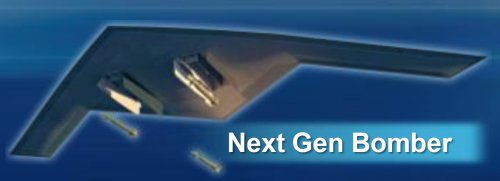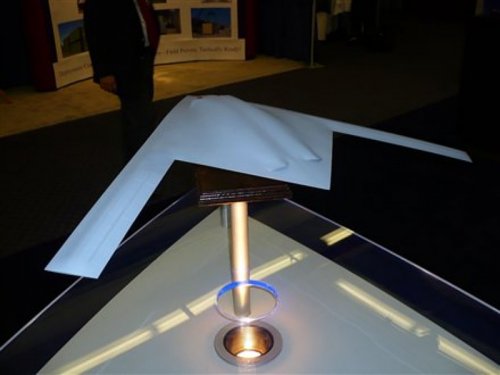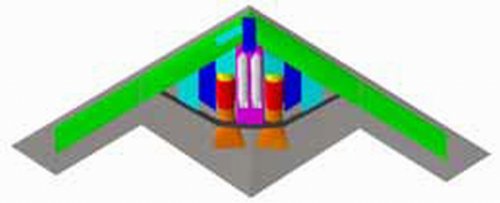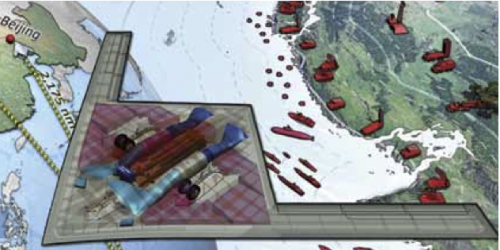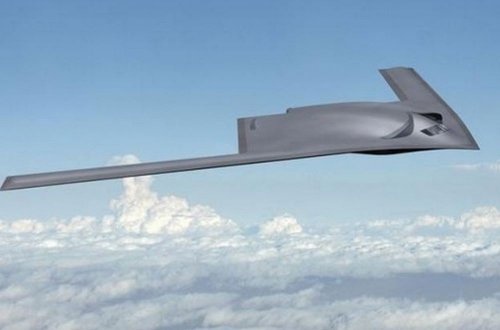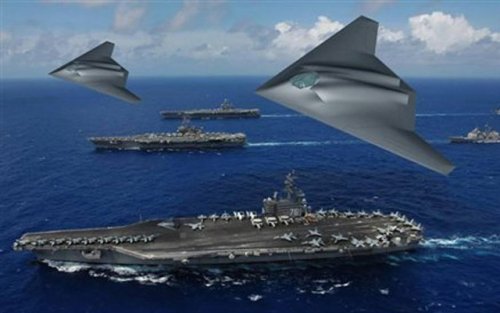You are using an out of date browser. It may not display this or other websites correctly.
You should upgrade or use an alternative browser.
You should upgrade or use an alternative browser.
US Next Generation Bomber Studies
- Thread starter flateric
- Start date
marauder2048
"I should really just relax"
- Joined
- 19 November 2013
- Messages
- 3,157
- Reaction score
- 776
AeroFranz said:In the case of ALCMs and ICBMs the man is only removed from the system by one degree. In an unmanned bomber there is at least one more. I think the potential for SNAFUs increases exponentially with degrees of separation.
Cynically, I've often wondered if the nuclear warheads onboard bombers were "salvage fused" once they penetrated enemy airspace. In other words, if the bomber goes down over enemy territory it goes down with a very big bang.
- Joined
- 3 June 2011
- Messages
- 17,336
- Reaction score
- 9,070
marauder2048 said:AeroFranz said:In the case of ALCMs and ICBMs the man is only removed from the system by one degree. In an unmanned bomber there is at least one more. I think the potential for SNAFUs increases exponentially with degrees of separation.
Cynically, I've often wondered if the nuclear warheads onboard bombers were "salvage fused" once they penetrated enemy airspace. In other words, if the bomber goes down over enemy territory it goes down with a very big bang.
One would hope so.
- Joined
- 21 January 2015
- Messages
- 10,688
- Reaction score
- 12,350
sferrin said:I wish. I think we're going to see a B-47 sized flying wing. *yawn*
Probably something like that from NG but with Lockheed maybe something different.
There is nothing to say it has to be a flying wing design.
- Joined
- 3 June 2011
- Messages
- 17,336
- Reaction score
- 9,070
Flyaway said:There is nothing to say it has to be a flying wing design.
Of course not. But it will be.
dark sidius
ACCESS: Top Secret
- Joined
- 1 August 2008
- Messages
- 604
- Reaction score
- 212
False it can be another shape, nobody know exactly what the futur bomber will be, just speculation for now. Stealth don(t mean flyng wing look at the F-35 its not a flyng wing.
- Joined
- 3 June 2011
- Messages
- 17,336
- Reaction score
- 9,070
dark sidius said:False it can be another shape,
Who said it couldn't?
DrRansom
I really should change my personal text
- Joined
- 15 December 2012
- Messages
- 669
- Reaction score
- 198
Ahh, a Mach 2 cruising bomber would be excellent. But, flying wing is vastly more likely than that.
There is some hope for the future, as counter-stealth improves and interceptor get better, the USAF may be forced to look for speed in the next bomber (2060?).
There is some hope for the future, as counter-stealth improves and interceptor get better, the USAF may be forced to look for speed in the next bomber (2060?).
- Joined
- 21 April 2009
- Messages
- 13,171
- Reaction score
- 6,060
DrRansom said:Ahh, a Mach 2 cruising bomber would be excellent. But, flying wing is vastly more likely than that.
There is some hope for the future, as counter-stealth improves and interceptor get better, the USAF may be forced to look for speed in the next bomber (2060?).
I will be lucky to see one more generation of aircraft fly in my lifetime. :'(
- Joined
- 1 April 2006
- Messages
- 10,730
- Reaction score
- 6,760
Ah, that's why Northrop is stressing the point that they are leaders in design of LO, blended wing airframes in latest spring advertising...dark sidius said:False it can be another shape, nobody know exactly what the futur bomber will be, just speculation for now. Stealth don(t mean flyng wing look at the F-35 its not a flyng wing.
donnage99
"Robert Gates, is that you??" sublight
- Joined
- 16 June 2008
- Messages
- 1,215
- Reaction score
- 407
Accept we are pretty certain they are not trying to build another airframe with fighter's agility and f-35's level of stealth, so pretty certain they going for the optimum stealth shape - flying wing.dark sidius said:False it can be another shape, nobody know exactly what the futur bomber will be, just speculation for now. Stealth don(t mean flyng wing look at the F-35 its not a flyng wing.
XP67_Moonbat
ACCESS: Top Secret
- Joined
- 16 January 2008
- Messages
- 2,246
- Reaction score
- 378
So say we all! 
Rhinocrates
ACCESS: Top Secret
- Joined
- 26 September 2006
- Messages
- 2,112
- Reaction score
- 4,509
Moose said:I'm sorry I'm just not at the point where I find flying wings "boring" yet. Boring is Boeing and Airbus bending over backwards to keep putting out tube-and-wing airliners.
The tube-and-wing configuration has a compelling physical justification: all of the passengers are close to the axis. If a flying wing, multiple-fuselage or span loader banks just a few degrees or hits turbulence, passengers away from the axis will at best be nauseated and wearing their drinks and at worst seriously injured as their skulls impact the overhead lockers. The only reason they wouldn't be calling their lawyers immediately is that their phones would be hurtling around the cabin. Movements like that would be a problem with tying down heavy freight in a spanloader too.
bring_it_on
I really should change my personal text
- Joined
- 4 July 2013
- Messages
- 3,123
- Reaction score
- 2,239
LRS-B Will Be Fixed-Price
http://www.airforcemag.com/DRArchive/Pages/2015/March%202015/March%2020%202015/LRS-B-Will-Be-Fixed-Price.aspx
Air Force acquisition chief William LaPlante revealed some of the service's acquisition plan for the Long-Range Strike Bomber Thursday. At a Senate Armed Services Committee's airland subcommittee hearing, LaPlante explained that USAF is doing all it can to contain costs on the bomber, and that cost is a key competitive requirement. While the development phase will be cost-plus, LaPlante said, the LRS will be structured for fixed-price production. "The first one off the line is going to be fixed-price," LaPlante said in response to a question from Sen. Mike Rounds (R-S.D.). In previous speeches and testimony, LaPlante has echoed Pentagon acquisition, technology, and logistics chief Frank Kendall, saying a fixed-price contract should only be used when a product is very well understood. Clearly, USAF believes it will have thorough knowledge of what the LRS-B "should cost" after the development phase. In an interview with Air Force Magazine last August, LaPlante said the LRS-B would not be chosen based on drawings alone but by evaluating "variants ... of technical articles; ... prototypes, if you want to call it," suggesting that subscale demonstrators, or proof-of-concept craft, have been flying for some time. He also said in the interview that industry would likely have to invest a considerable amount of its own money in development to assure the maturity of the technology for production. USAF has said it plans to award the program in the June timeframe. LaPLante told Rounds that "nothing has changed" on the program since 2010 and that the target $550 million unit cost in 2010 dollars still holds. (See also Staying Stealthy from the August 2014 issue of Air Force Magazine.) (LaPlante prepared testimony)
http://www.airforcemag.com/DRArchive/Pages/2015/March%202015/March%2020%202015/LRS-B-Will-Be-Fixed-Price.aspx
- Joined
- 16 April 2008
- Messages
- 8,398
- Reaction score
- 10,361
I've seen several Blended Wing Body airliner designs with what appear to be viable evacuation schemes. Obviously, the need testing, but the same is true of ultra-large conventional aircraft like the A380, for example. They have already tested at least one BWB concept with live people and it seems to work (at least well enough to validate the computer models).
http://www.flightglobal.com/news/articles/bwb-can-be-evacuated-in-90s-say-academics-225167/
Likewise, turbulence effects on passengers have been studied and seem within the same limits as conventional airliners.
No, the reson for conventiopanl wing and tube airliners is all about manufacturing -- even with composites, it's still easier (cheaper) to build a basically cylindrical pressure compartment and attach wings than it is to build a BWB. It's probably enough cheaper that the decreased acquisition cost more than offsets any potential life-cycle fuel savings.
http://www.flightglobal.com/news/articles/bwb-can-be-evacuated-in-90s-say-academics-225167/
Likewise, turbulence effects on passengers have been studied and seem within the same limits as conventional airliners.
No, the reson for conventiopanl wing and tube airliners is all about manufacturing -- even with composites, it's still easier (cheaper) to build a basically cylindrical pressure compartment and attach wings than it is to build a BWB. It's probably enough cheaper that the decreased acquisition cost more than offsets any potential life-cycle fuel savings.
Avimimus
ACCESS: Top Secret
- Joined
- 15 December 2007
- Messages
- 2,234
- Reaction score
- 499
The Tu-95 has a wing and cylinder configuration - and it uses and emergency conveyor belt ejections system...!
So long as aviation fuel remains subsidised and cheap.
TomS said:No, the reson for conventiopanl wing and tube airliners is all about manufacturing -- even with composites, it's still easier (cheaper) to build a basically cylindrical pressure compartment and attach wings than it is to build a BWB. It's probably enough cheaper that the decreased acquisition cost more than offsets any potential life-cycle fuel savings.
So long as aviation fuel remains subsidised and cheap.
Rhinocrates
ACCESS: Top Secret
- Joined
- 26 September 2006
- Messages
- 2,112
- Reaction score
- 4,509
Considering the full life of a basic airliner design that may come in stretched and shortened versions, a tube can fairly cheaply have sections cut or added compared to a BWB - though maybe a Y-shaped cut can be made, that is, along the axis towards the tail and forking at the nose.
I remain very sceptical about turbulence/banking effects on passengers: a longer radius inevitably means greater movement and stronger vertical accelerations. It's likely that airlines will remember this and assume that passengers are brittle, squishy and litigious and calculate that a BWB may be cheaper fly, but too financially risky otherwise.
That said, freight doesn't get sick and doesn't mind being tied down for the whole flight.
EDIT Anyway, I've done a bit of digging. The Boeing design from about 2009 comes in 3 and 5 bay versions, so in principle, a BWB is stretchable.
The more recent DLR design (sorry, no exact date - image file metadata says 2011) keeps the passengers close to the longitudinal axis compared to the 5-bay Boeing design that doesn't, so maybe thinking has evolved between 2009 and circa 2011 to take thinking about turbulence into account or two separate teams simply came up with different solutions.
I remain very sceptical about turbulence/banking effects on passengers: a longer radius inevitably means greater movement and stronger vertical accelerations. It's likely that airlines will remember this and assume that passengers are brittle, squishy and litigious and calculate that a BWB may be cheaper fly, but too financially risky otherwise.
That said, freight doesn't get sick and doesn't mind being tied down for the whole flight.
EDIT Anyway, I've done a bit of digging. The Boeing design from about 2009 comes in 3 and 5 bay versions, so in principle, a BWB is stretchable.
The more recent DLR design (sorry, no exact date - image file metadata says 2011) keeps the passengers close to the longitudinal axis compared to the 5-bay Boeing design that doesn't, so maybe thinking has evolved between 2009 and circa 2011 to take thinking about turbulence into account or two separate teams simply came up with different solutions.
Attachments
Rhinocrates
ACCESS: Top Secret
- Joined
- 26 September 2006
- Messages
- 2,112
- Reaction score
- 4,509
Additional - the recently proposed Skunkworks hybrid wing-body features a circular pressurised hold flanked by unpressurised freight compartments. Apparently it combines the best fuel efficiency with easier manufacturing and logistics than would be the case with a pure flying wing.
Back to the main topic thread, the B-2 keeps its payload close to the centreline even though the weapon bays are side-to side. That's sensible if it's suddenly dropping weight (bombers do that, I hear) and the starboard rotary launcher unexpectedly jams while the port one works.
Anyway, a good engineer and a good accountant will assume that multiple factors come into play simultaneously in a design and that one will go disastrously wrong sometime. They'll ask themselves if the rest of the design can cope or make sure that it can.
I would assume something similar for the "B-3".
Back to the main topic thread, the B-2 keeps its payload close to the centreline even though the weapon bays are side-to side. That's sensible if it's suddenly dropping weight (bombers do that, I hear) and the starboard rotary launcher unexpectedly jams while the port one works.
Anyway, a good engineer and a good accountant will assume that multiple factors come into play simultaneously in a design and that one will go disastrously wrong sometime. They'll ask themselves if the rest of the design can cope or make sure that it can.
I would assume something similar for the "B-3".
Attachments
Rhinocrates
ACCESS: Top Secret
- Joined
- 26 September 2006
- Messages
- 2,112
- Reaction score
- 4,509
Early design for the Avro Vulcan - bomb bays outboard, engines inboard - an arrangement that was reversed in the production aircraft. (From Buttler, British Secret Projects: Jet Bombers Since 1949, p. 20)
I assume that the designers decided/learned that compensating for constant weight loss to port and sudden weight loss to starboard as the bomb is released would have been beyond 1940s era flight controls.
For those confused by the arrangement of the four engines, the forward pair are staggered above the aft pair with their exhausts over the top of the wing. That would have led to some access and servicing problems, no doubt.
EDIT: It occurred to me that because this was Britain's first multi-engined jet bomber and jets were not as reliable then, the reasons for clustering the engines around the centreline would be to minimise the effect one engine or more shutting down suddenly. The designers may have calculated that one engine MIGHT fail and one big heavy bucket of instant sunshine WILL be dropped, it was preferable to keep the bomb bay in the middle and the engines outboard and in a row.
I assume that the designers decided/learned that compensating for constant weight loss to port and sudden weight loss to starboard as the bomb is released would have been beyond 1940s era flight controls.
For those confused by the arrangement of the four engines, the forward pair are staggered above the aft pair with their exhausts over the top of the wing. That would have led to some access and servicing problems, no doubt.
EDIT: It occurred to me that because this was Britain's first multi-engined jet bomber and jets were not as reliable then, the reasons for clustering the engines around the centreline would be to minimise the effect one engine or more shutting down suddenly. The designers may have calculated that one engine MIGHT fail and one big heavy bucket of instant sunshine WILL be dropped, it was preferable to keep the bomb bay in the middle and the engines outboard and in a row.
Attachments
Rhinocrates
ACCESS: Top Secret
- Joined
- 26 September 2006
- Messages
- 2,112
- Reaction score
- 4,509
Aha, so it does! According to "003" below at least.
Still, something like sixty years of development in avionics since and one big off-centre bomb depicted in the original Avro design.
Other images show a centreline bomb bay - e.g.. "lm-boeing-ngb-planform-view" "ngb" - are these to be taken seriously?
BTW, this wonderful documentary tells the tale of the Falklands Vulcan mission - including asides on the very, very primitive "computers" on board.
https://www.youtube.com/watch?v=X2Yl8ntVS-4&spfreload=10
Still, something like sixty years of development in avionics since and one big off-centre bomb depicted in the original Avro design.
Other images show a centreline bomb bay - e.g.. "lm-boeing-ngb-planform-view" "ngb" - are these to be taken seriously?
BTW, this wonderful documentary tells the tale of the Falklands Vulcan mission - including asides on the very, very primitive "computers" on board.
https://www.youtube.com/watch?v=X2Yl8ntVS-4&spfreload=10
Attachments
bring_it_on
I really should change my personal text
- Joined
- 4 July 2013
- Messages
- 3,123
- Reaction score
- 2,239
Northrop put this up on their youtube page last week... 
https://www.youtube.com/watch?v=UDCpj5dieGg
https://www.youtube.com/watch?v=UDCpj5dieGg
- Joined
- 1 April 2006
- Messages
- 10,730
- Reaction score
- 6,760
Rhinocrates said:Aha, so it does! According to "003" below at least.
Still, something like sixty years of development in avionics since and one big off-centre bomb depicted in the original Avro design.
Other images show a centreline bomb bay - e.g.. "lm-boeing-ngb-planform-view" "ngb" - are these to be taken seriously?
Third picture turned out to be some AFRL concept, fourth is incorrect CBSA reconstruction based on published B/LM NGB render
- Joined
- 21 January 2015
- Messages
- 10,688
- Reaction score
- 12,350
Their heritage in this area plus what I think would be an undesirable result longer term for the taxpayer with so much work military aviation clustering around LM means I would rather see an NG win if both vehicles are equally capable.
- Joined
- 17 October 2006
- Messages
- 2,282
- Reaction score
- 607
If things have been well managed it should be a close race by this time.
Recall that when LM and Boeing decided to team in Oct 13, NG was coy about whether it would compete. Translated: "We're not spending $$$m just to keep the other guys on their toes." Same thing happened in the run-up to B-2.
Recall that when LM and Boeing decided to team in Oct 13, NG was coy about whether it would compete. Translated: "We're not spending $$$m just to keep the other guys on their toes." Same thing happened in the run-up to B-2.
- Joined
- 21 January 2015
- Messages
- 10,688
- Reaction score
- 12,350
If we read between the lines of recent official statements I don't think it would be too far out to guess that both sides have invested considerable money in their designs up too and including flying prototypes.
bring_it_on
I really should change my personal text
- Joined
- 4 July 2013
- Messages
- 3,123
- Reaction score
- 2,239
Tough Choices For DoD On Long Range Strike Bomber
Interesting bit -
http://breakingdefense.com/2015/04/tough-choices-for-dod-on-long-range-strike-bomber/
Interesting bit -
When the Pentagon picks the winner of the Long Range Strike Bomber (LRSB) contest in the next few months, it faces an interesting choice. It could give Lockheed Martin — which is doing the design work for the Boeing-Lockheed team — almost all of the country’s advanced stealth design work. Or it could maintain the status quo, in which the entire stealth bomber fleet is made by Northrop Grumman.
If Boeing wins, Lockheed will do the critical design work and will almost certainly not share that intellectual property with Boeing. The Boeing-Lockheed team has the aircraft production credentials and the power to send dozens of lobbyists and carloads of cash to Capitol Hill to ensure the program’s safety in the face of the coming budget crunch.
If Northrop wins, the nation has two design teams able to work on stealthy aircraft and it gets the incumbent.
http://breakingdefense.com/2015/04/tough-choices-for-dod-on-long-range-strike-bomber/
- Joined
- 1 April 2006
- Messages
- 10,730
- Reaction score
- 6,760
- Joined
- 17 October 2006
- Messages
- 2,282
- Reaction score
- 607
I hadn't noticed that bit in the Forbes piece before - the description of LM & Boeing as a Soviet-style design-build team. It does not reflect reality.
- Joined
- 3 June 2011
- Messages
- 17,336
- Reaction score
- 9,070
LowObservable said:I hadn't noticed that bit in the Forbes piece before - the description of LM & Boeing as a Soviet-style design-build team. It does not reflect reality.
Why wouldn't LM take the lead on the OML configuration given its greater experience in developing stealth aircraft?
- Joined
- 16 April 2008
- Messages
- 8,398
- Reaction score
- 10,361
That's not what the article claims. It says that LM is doing the whole design effort and Boeing is just there for fabrication (i.e., LM does the design and tells Boeing "build this"). That would be ignoring a lot of design expertise within Boeing's Phantom Works for no good reason.
- Joined
- 21 January 2015
- Messages
- 10,688
- Reaction score
- 12,350
These are the key bits for me in the article from Breaking Defense.
And this.
The argument for the Boeing-led team rests principally on the fact that Boeing often can produce large numbers of large aircraft on time and at a reasonable cost. But Boeing’s record on commercial aircraft is mixed — 777 vs. 787 — and it’s encountering difficulties with the KC-46, a commercial aircraft that’s being modified for military tanker use.
“When they get it right, when they do large volume aircraft, they do it better than anyone,” Aboulafia told me yesterday evening. “But you also have a company that stumbles pretty badly,” offering as an example the Wedgetail, and, to a lesser degree, the KC-46. Both are weapons based on commercial airframes, supposedly eliminating many of the usual problems that surface when a new military aircraft is designed and built.
And this.
If Northrop wins, the nation has two design teams able to work on stealthy aircraft and it gets the incumbent. While space is a different realm in terms of engineering and industrial base, it shares elements of requiring the most advanced engineering talent. The last time Boeing won a huge contract in an area in which it didn’t have much experience, advanced intelligence satellites, the country suffered years of cost overruns, busted schedules and got, by all accounts, a largely failed program, known as the Future Imagery Architecture. Let’s all just hope the selection committee gets this one right.
- Joined
- 3 June 2011
- Messages
- 17,336
- Reaction score
- 9,070
TomS said:That's not what the article claims. It says that LM is doing the whole design effort and Boeing is just there for fabrication (i.e., LM does the design and tells Boeing "build this"). That would be ignoring a lot of design expertise within Boeing's Phantom Works for no good reason.
Yeah, I can't see that.
Similar threads
-
ASD Preliminary Designs in Splendid Vision, Unswerving Purpose
- Started by XP67_Moonbat
- Replies: 16
-
Strategic/Theatre/Vertical Configurable Air Transports (S-CAT, T-CAT, V-CAT)
- Started by Stargazer
- Replies: 15
-
-
-

